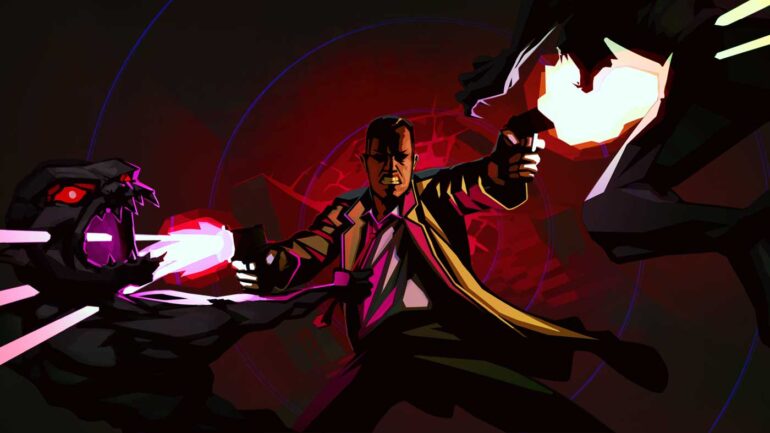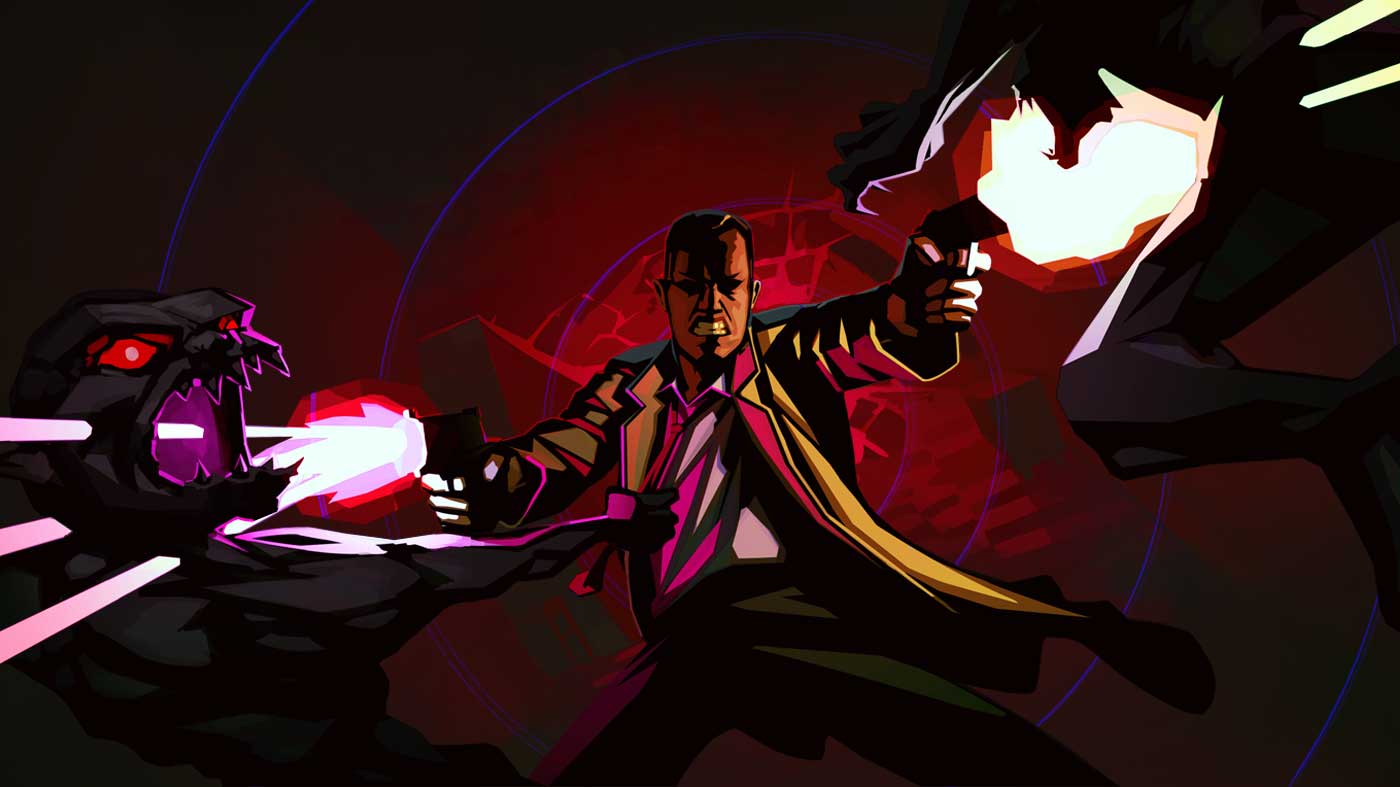“Break shit, kill people,” I’m trapped in a room full of ravenous vampires, werewolves, and magic orb throwing, weeping brides. “Break shit, kill people,” I’m frantically diving and dodging, nabbing precious ammo boxes and the odd stake left on the ground after one of my stray bullets shattered a chair. “Break shit, kill people,” I’m locked in a hellish space that centres a smaller room in which a lifetime’s worth of love and pain is playing out, each time I pass the windows another scene, another fight. “Break shit, kill people,” at some point the reverberating undertones of the score and the constant whine of gunshots had synthesised into a vocal backing track with the chorus looping, inviting, demanding – “Break shit, kill people.”
It’s noisy in James Savage’s head. On a self-proclaimed “one way trip” to his hometown of El Paso, Texas, Savage is in the throes of a relapse. His worst to date, the clean living and uneasy commitment to sobriety curb stomped by two specific and somehow equally deadly trigger points – his ex is back and she’s trying to end the world. In a piece of shit motel somewhere in El Paso, Draculae, the queen of the vampires, has taken hostages and pierced the veil between our worlds, inviting The Void into the hotel’s dank halls. Savage, taking up arms and a bottle of pills, wants to save the innocent, and prevent the apocalypse, but if he’s being honest with himself, all he really wants is to see Janet Drake again, the only woman he’s ever made happy.
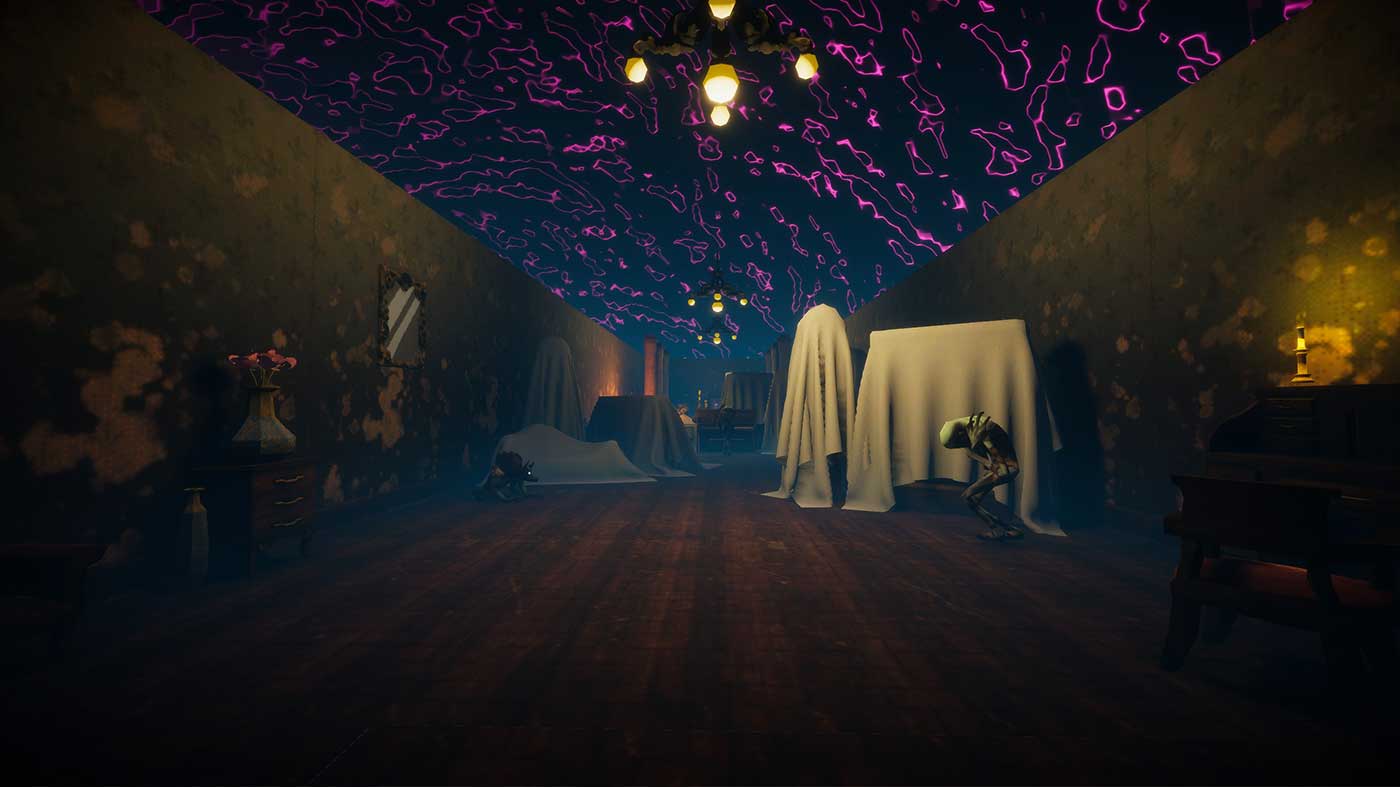
This is the gunshot El Paso, Elsewhere starts the race with. Heavily inspired by Rockstar Games’ iconic Max Payne franchise and the noir genre, the game sends Savage down a fifty-story gauntlet of discreet, maze-like levels to do battle with hordes of Draculae’s monsters and his own demons. Interspersed between levels, and sometimes during, developer Strange Scaffold fuses the overtly gamified structure with intensely cinematic visual language to create something unique and compelling.
Stopping Draculae’s plans to call curtains on humanity means going toe-to-toe with a cavalcade of monsters ripped from mythology and folklore. Casting its eye all the way back to ancient Egypt, contemporary Western religious imagery, and a whole host of strange things in between, El Paso, Elsewhere throws a lot at Savage. When faced with a biblically accurate angel tossing celestial missiles your way, I’m not sure what else you would do other than take up an Uzi and pray. Savage’s arsenal of guns is well-rounded, running the gamut from pistols, rifles, shotguns, and special weapons like holy fire grenades and the one-shot kill stakes. Given El Paso, Elsewhere’s penchant for violence, it’s fortunate there isn’t a dud in the line-up, each gun a proficient tool for dealing with a variety of foes and feeling fundamentally good to let loose with.
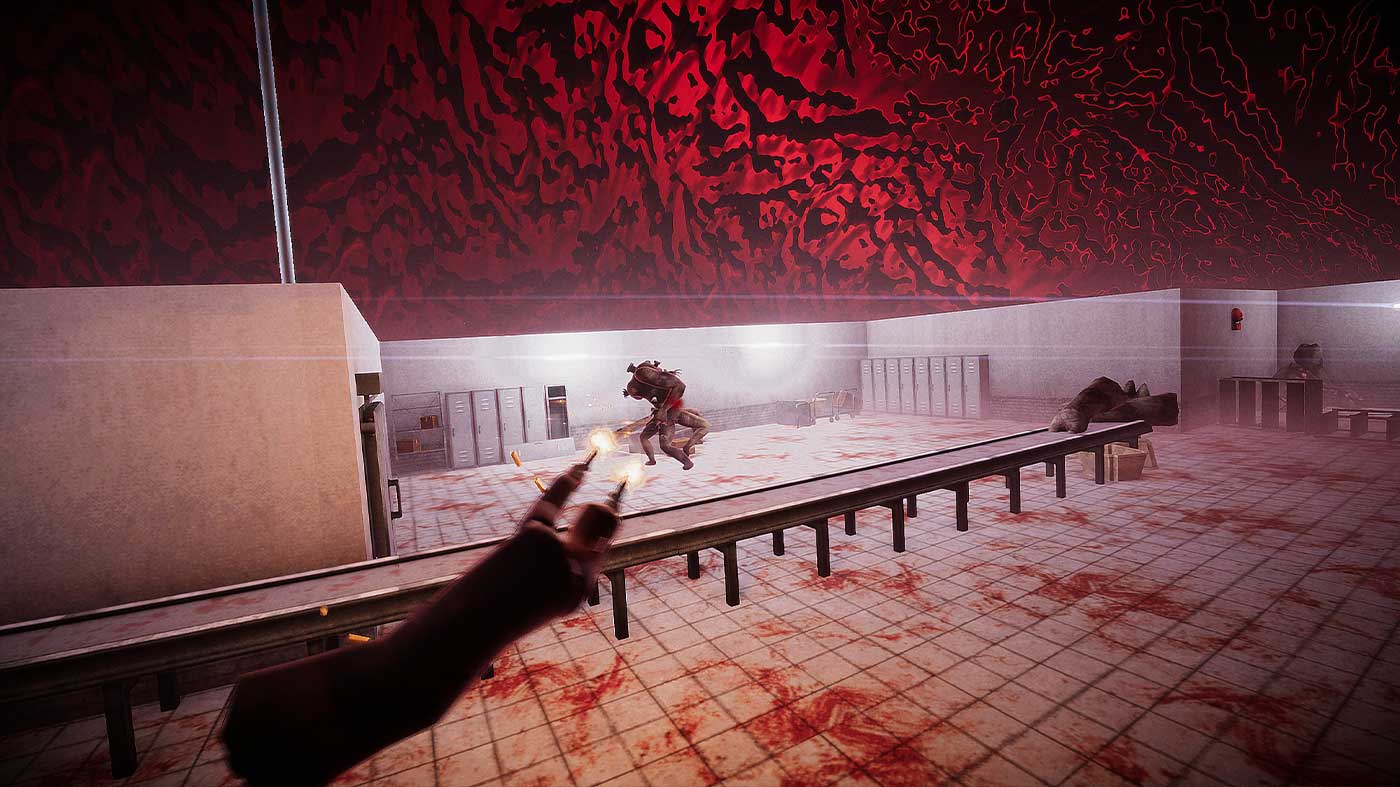
But for all its heart-pounding gunplay and pulsing aesthetics, this isn’t a game about relentless carnage but considered and deliberate shots and movements. El Paso, Elsewhere is littered with ammo pick-ups but absolutely saturated in enemies, the ratio meaning that timely and accurate attacks will serve you far better than the spray and pray approach. The vibe of the game screams let go but its systems demand a steady grip, a purposeful bit of tension that heightens encounter design and almost effortlessly mirrors Savage’s re-descent into addiction. “Wouldn’t it just be easier to surrender, to lean all the way into the trigger finger cravings?” the game asks. “No,” you have to say back, all the while keenly aware of how sweet it tastes to do so.
The tartness of this need for precision is mellowed by the game’s bullet-time mechanic that sees Savage slow down time while diving or simply on a whim with a button press. This limited resource refills slowly but is a style powerhouse and gameplay godsend as later levels throw increasingly dramatic encounters your way. Once initiated it makes high-damage shots and crowd control much easier, even if swinging the reticle around felt a little off in enclosed environments. There were a handful of times Savage was awkwardly crammed into a corner by enemies, the game’s aiming not quite up to the task of dispatching foes that close to the player. This is one part skill issue, my own fault for not handling the situation better, but paired with some rough platforming sections, it did paint a picture of systems that excel in most cases but mildly frustrate in others.
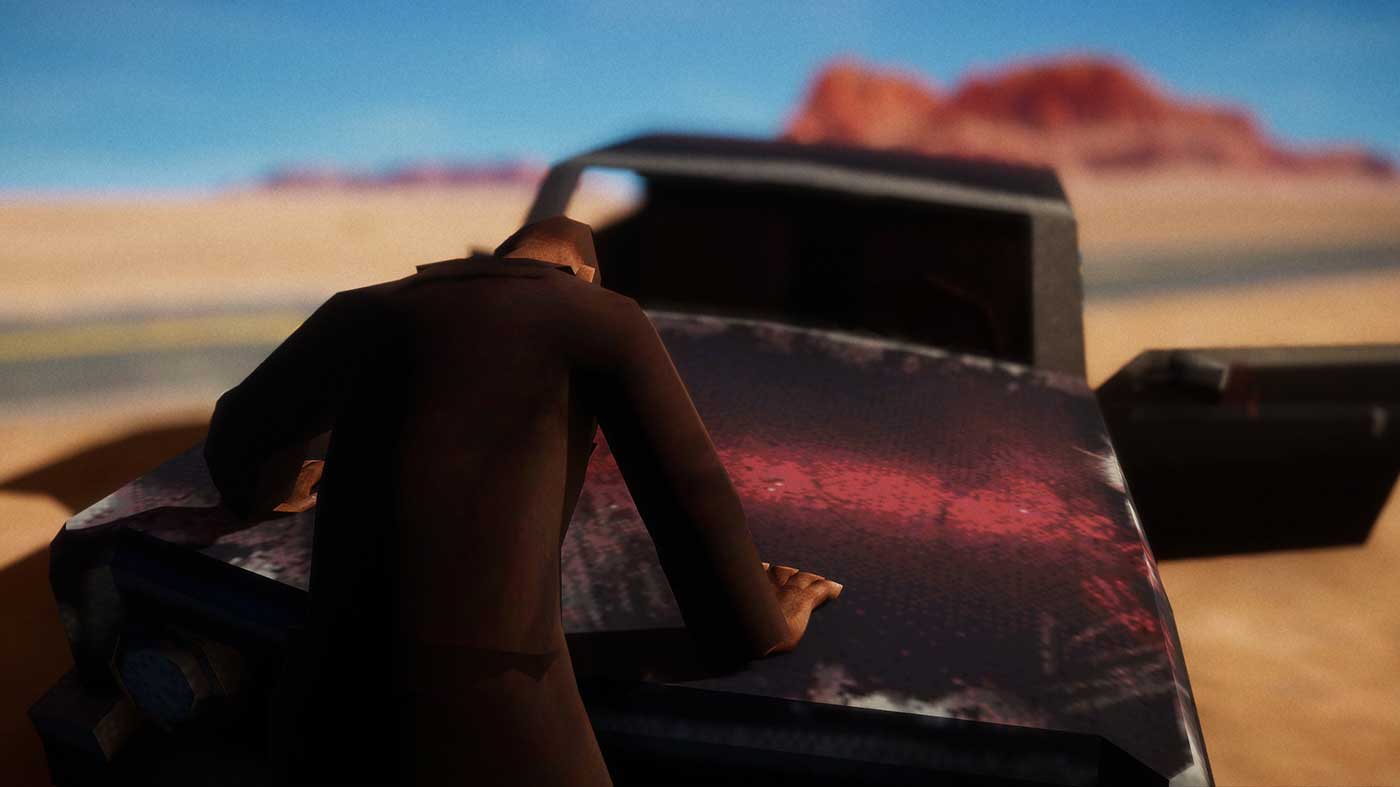
These moments only hit the palette so harshly because of the contrast with the rest of El Paso, Elsewhere’s impossibly-slick command over game feel and tone. At around seven to eight hours to finish there’s a case to be made that it sticks around a little longer than it needed to, its core loop of dropping in, rescuing hostages, blasting baddies, repeat, becoming a little numbing after hour five or so. But it’s difficult to remember those feelings when you collide with the next story beat or gorgeous cutscene. It should be clear that El Paso, Elsewhere isn’t just a game about vampires and guns, its ultra cheesy noir vibe is a carefully constructed bait to make you take a full bite out of its tale of addiction, self-worth, and starkly-human relationships.
Anchored by two outstanding voice performances and more support work than I have time to list, El Paso, Elsewhere’s beating heart is its narrative and thematic work. The game’s creative director, Xalavier Nelson Jr. and voice actor Emme Montgomery, bring Savage and Draculae to life respectively in turns that manage to quietly slink between pulpy and achingly real without you even noticing. El Paso, Elsewhere is heavily stylised and its noir trappings result in genre staples like gruff monologues and sweeping metaphors (audio log memories are played on projectors), but behind that façade are raw moments that hit like a truck. Savage’s relationship with Drake is messy, far messier than I’ve seen a game try to handle in years, and it results in something that of course exists in the heightened reality of vampires and magic but is always grounded in brutal, recognisable reality.
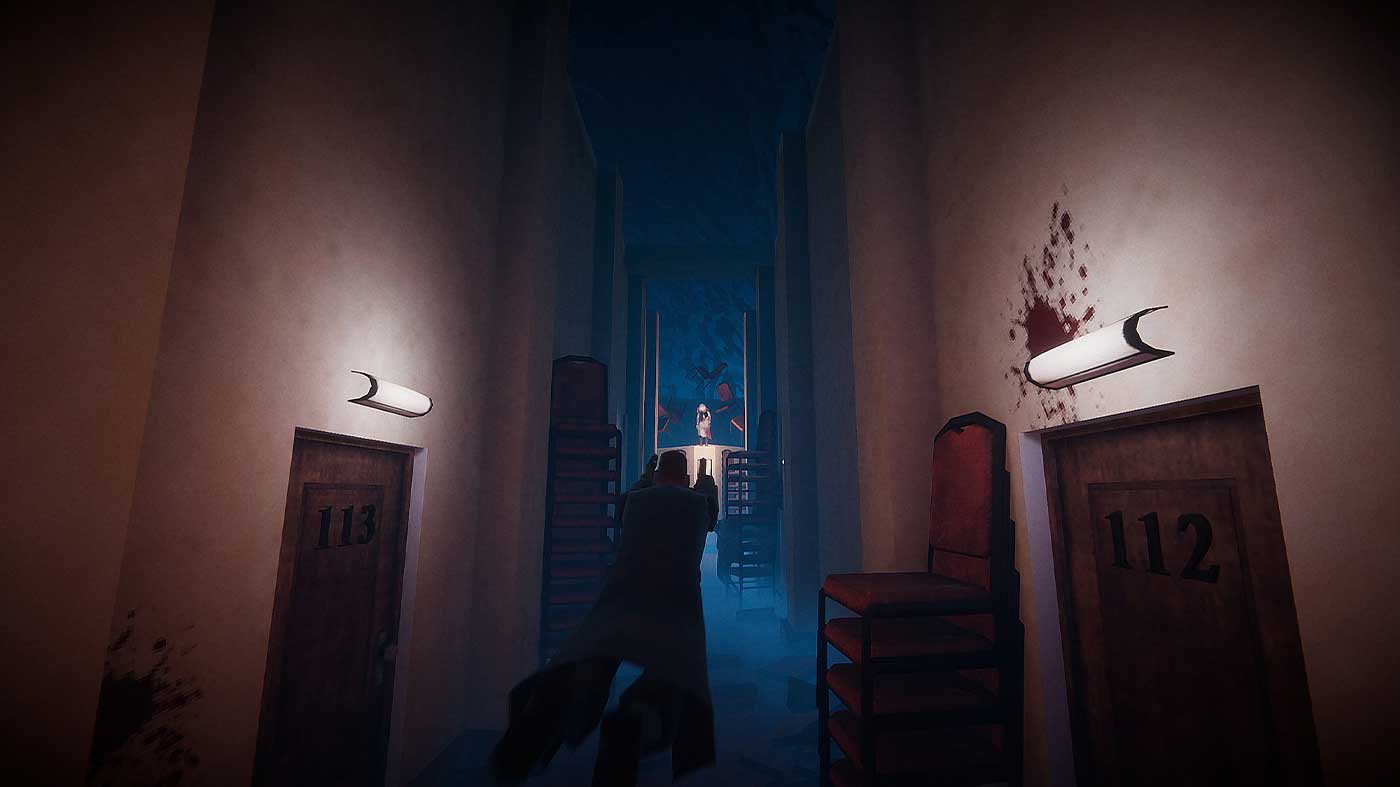
Nelson’s art has never turned away from his real-world inspiration points and El Paso, Elsewhere is something of an achievement in this design philosophy. A towering ode to the Black American experience as well as personhood as understood through vulnerability both ugly and beautiful, this is a game that uses a relatively solid mechanical foundation to reach far greater heights. It’s soaked into the walls of it; the game’s relentless soundtrack is a collaboration between Nelson and musician RJ Lake, a hip-hop infused banger that compliments every scene it’s used in. The art direction is an uncomfortable dreamlike collision of high-fidelity lighting and smudged textures, placing the game entirely out of time aesthetically and lending its absurdist creations, and human drama, an eerie identity.
It’s style as substance, taking a fun and well-realised third-person shooter and fortifying it with Remedy-esque level design, Rockstar-adjacent combat, and wholly Strange Scaffold life. Even when I found myself growing weary of its loops, the promise of the next moment that would make my chest tight or eyes pop propelled me forward. In a fun call and response to Dark Souls’ historic “YOU DIED” splash, when Savage falls in battle “YOU KEEP GOING” slams onto the screen, each word punctuated with a hard beat. El Paso, Elsewhere loves its vampires and its crunchy gunplay, but what it wants more than anything else, no matter what you’re facing, is for you to keep going.


